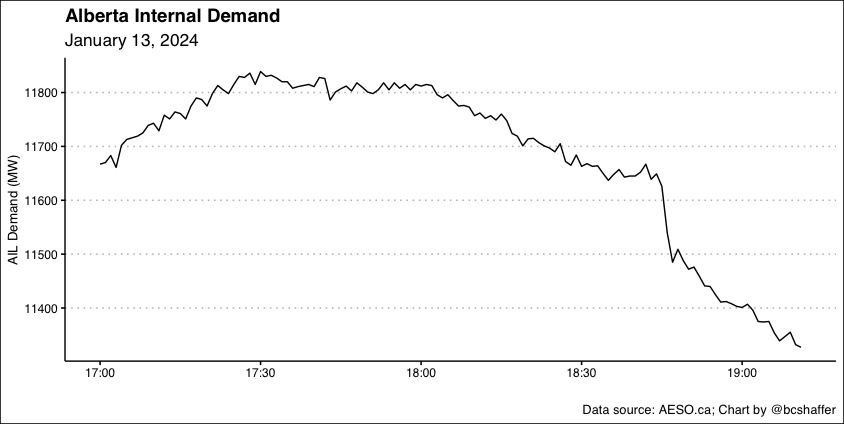1/ The report cited below is flawed. It is akin to a report finding the UCP cutting spending by 50% would have a devastating effect on public services--regardless of whether that is actual policy.
In short, the report does NOT analyze actual Fed carbon policy.
Let me explain..
In short, the report does NOT analyze actual Fed carbon policy.
Let me explain..
https://twitter.com/jkenney/status/1165075326793240577
2/ The report assesses the cost impact of a $50 carbon tax and assesses the competitiveness effect on energy-intensive trade-exposed industries. It mentions Fed policy includes an “output-based pricing system” to mitigate these concerns, but *excludes* it from the analysis.
3/ Report: “firms make decisions based on marginal costs whereas the OBPS rebate will be a lump-sum transfer and thus will not have much effect at the margin”.
This is wrong. Output-based allocations depend on… output! By their very nature they affect decisions at the margin.
This is wrong. Output-based allocations depend on… output! By their very nature they affect decisions at the margin.
4/ For more on this, see my blog post here: ecofiscal.ca/2016/04/05/cas…
Or chapter 6 of this report here: ecofiscal.ca/wp-content/upl…
Or chapter 6 of this report here: ecofiscal.ca/wp-content/upl…
5/ The report attempts to value the OBPS, but only in an App'x, not in the main text.
Appx B correctly includes OBAs in the marginal decision (contradicting the earlier description as lump-sum) but the analysis relies heavily on a subtle assumption: increasing marginal emissions
Appx B correctly includes OBAs in the marginal decision (contradicting the earlier description as lump-sum) but the analysis relies heavily on a subtle assumption: increasing marginal emissions
6/ What does this mean? As you produce more, you emit more to produce 1 more widget than the last 1. This would be true for a coal plant going from 90->100%, but not likely when going 60->70%. Also not likely true for SAGD oil sands, where scale can lower marginal emissions.
7/ The numerical analysis relies on a specific functional form of the emissions curve: E=a*Y^b. When b>1, this is increasing marginal emissions (think of a curve starting flat and bending higher). When b<1, the opposite is true: more output means decreasing marginal emissions.
8/ To make the arg against OBPS, the report uses 7 b’s that are ALL>1. In other words, the marginal emissions are always increasing.
To be fair, this is a ripe area to look at, but it’s a *very strong* assumption that ALL industries, ALL firms are increasing marginal emissions
To be fair, this is a ripe area to look at, but it’s a *very strong* assumption that ALL industries, ALL firms are increasing marginal emissions
9/ Without this assumption OBPS would dampen most of the cost increase from the carbon price, fully obviating the headline findings of this report.
Ignoring OBPS and using a skewed example does a disservice to those wanting to better understand the real effects of carbon pricing
Ignoring OBPS and using a skewed example does a disservice to those wanting to better understand the real effects of carbon pricing
10/ One thing I will say is the report notes many caveats:
- carbon pricing would be less costly than alternative actions
- behavioral changes in response to higher energy prices such as input substitutions, technology adoption, or production process changes are excluded
- carbon pricing would be less costly than alternative actions
- behavioral changes in response to higher energy prices such as input substitutions, technology adoption, or production process changes are excluded
11/ Yet, sadly, these nuanced caveats don’t make it to headlines, nor the politically motivated retweets.
In sum: This report ignores the core policy to deal with competitiveness concerns, leading to conclusions that grossly exaggerate those of actual policy.
/end.
In sum: This report ignores the core policy to deal with competitiveness concerns, leading to conclusions that grossly exaggerate those of actual policy.
/end.
• • •
Missing some Tweet in this thread? You can try to
force a refresh












